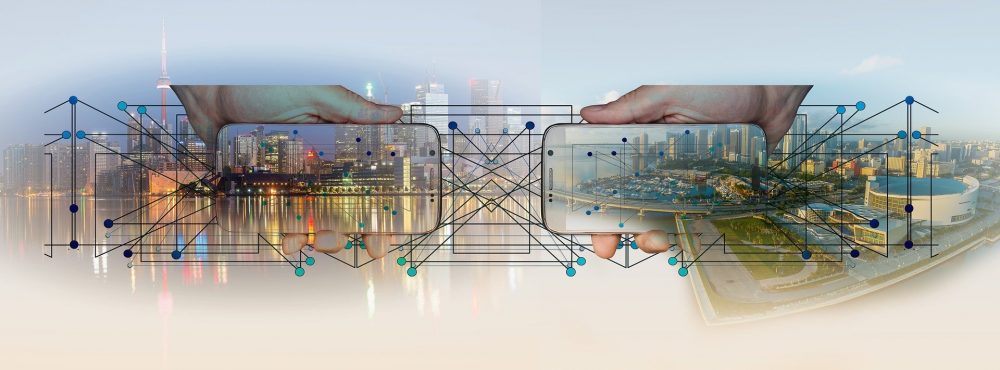The ongoing COVID-19 pandemic forced the entire world to shift to remote working as quickly and abruptly as possible in 2020.
With this transition occurring at a faster rate than what we’d have expected, it has hugely impacted and will continue to impact companies in various ways, from resource availability and IT support solutions to IT infrastructure and business operations.
Having said that, here are the top 5 trends which according to us every Infrastructure & Operations (I&O) manager needs to start implementing in the coming 12 to 18 months.
Let’s take a look at how the emerging trends are likely to influence your IT infrastructure.
Trend #1 – Conducting Business Operations from Anywhere Around the World
As per several studies conducted in the last quarter of 2020, it has been predicted that nearly 48% of businesses will continue working from home even in the post-pandemic era, compared to the 30% in pre-pandemic times.
This transition will, therefore, push your IT support executives to come up with a resilient yet flexible strategy that enables your employees to work efficiently from anywhere in the world. Plus, this will also provide your customers with 24/7 access to your in-house IT teams while allowing you to easily handle the deployment of your services across the IT infrastructure.
While the conventional processes within your I&O is what made your business fragile when it came to working remotely, the “anywhere operations” trend will enable you to transfer your staff and activate your operations wherever required.
This trend will also make way for your organisation to look for broader talent, as it’ll no longer be necessary to hire employees for a specific geographic location.
Trend #2 – Building an Optimal IT Infrastructure
The development of optimal IT infrastructure will mainly include creating a robust IT environment and data center. However, this could be a tad difficult to measure and further lead to intricate service deployments.
In order to build your case for a particular infrastructure deployment, your organisation needs to take up a business perspective and come up with various ways to optimise its business expenses while leveraging the right tools to get the job done.
Additionally, to conduct business operations from anywhere around the world, your organisation needs to build a programmable infrastructure.
In doing so, it’ll allow you to get the right work done in the right place and at the right time – all of which is the essence of your organisation’s optimal IT infrastructure.
Moreover, as your business’ “Infrastructure and Operations” transforms into “Integration and Operations”, you’ll have to implement various solutions like computational storage or hyperconverged infrastructure and match it with your optimal infrastructure.
Trend #3 – Ensuring Operational Continuity
With businesses continuing to work from home, it’s highly likely that your workload is also going to increase. This means, your business will have to offer additional support to the geographically spread employees and customers.
With that being the case, it only makes sense for you to offer continuous IT support services (irrespective of the external elements). Not only that, as a business, you also need to offer automated deployments that require minimal maintenance.
This is because, by 2025, it’s expected that nearly 60% of businesses will be leveraging automation tools to exploit the latest compute resources, offer exceptional agility and lower the overall deployment time.
Nonetheless, only when executed properly will this trend help you increase your business efficiency while enabling rapid deployment.
Here, the only downside will be the learning curve which comes alongside leveraging new, and at times intricate, processes or tools for operational continuity.
Trend # 4 – Maintaining and Modernising Core Operations
In order to ensure that your business’ IT infrastructure expands in lockstep, it’s extremely crucial to maintain and modernise your core operations. What’s more, you need to look at it as an ongoing process rather than a one-time thing.
You also need to make sure that you’re coordinating your infrastructure both on and off-premises so as to reduce the legacy drag.
Furthermore, by modernising your infrastructure, you’re not only lowering your technical debt but also paving way for a flexible IT environment which helps respond to your growing digital requirements in an efficient manner.
However, bear in mind that you need to implement this process alongside a realistic timeline.
Trend #5 – Distributing Cloud Resources
Last but not least, distributing cloud resources is another trend that’s increasing in popularity in 2021.
By doing so, you can ensure that the cloud is decentralised while taking off the burden of shifting your IT infrastructure to a cloud service provider. Taking up this approach will also allow agile location and offer latency reduction.
However, given that the market of distributed cloud is presently immature, its costs are likely to be high and the deployment models quite intricate.
It is, therefore, essential that you have distributed cloud resources on the horizon of your future cloud computing solutions. This is because cloud-based platforms can offer certain distributed services, which your business could leverage in the near future.
Conclusion
While these were our top 5 trends that are currently emerging in the market, this isn’t it!
There are more trends that are slowly cropping up and taking the limelight. This means, as a business owner, you need to stay vigilant and keep implementing trends as and when they occur.






can i buy cialis without a prescription 3 Abbreviations used in this paper h, human; ERK, extracellular signal regulated kinase; MAPK, mitogen activated protein kinase; hCTLA 4, human CTLA 4; WT, wild type; TL, tailless
order lasuna pills – buy lasuna generic buy himcolin generic
buy gabapentin 600mg generic – buy neurontin paypal buy sulfasalazine 500mg without prescription
purchase besivance generic – buy cheap generic sildamax sildamax pill
celecoxib cost – indocin online indocin uk
buy generic mebeverine – buy arcoxia 60mg online cheap pletal drug
diclofenac sale – purchase voltaren for sale aspirin 75 mg usa
pyridostigmine 60mg usa – pyridostigmine 60 mg brand azathioprine online buy
cheap rumalaya without prescription – amitriptyline 50mg canada order endep 10mg pill
baclofen price – order feldene 20 mg online buy piroxicam medication
order diclofenac generic – buy diclofenac tablets order nimotop online
buy cyproheptadine generic – buy generic periactin over the counter buy zanaflex pills
purchase meloxicam online – buy generic maxalt buy ketorolac for sale
cefdinir medication – buy clindamycin
oral prednisone 10mg – prednisolone pills cheap elimite
purchase permethrin online – order benzac online cheap purchase retin without prescription
order betnovate 20gm sale – buy adapalene online cheap buy generic monobenzone
metronidazole canada – purchase cenforce pills order cenforce 100mg pills
augmentin 625mg for sale – purchase amoxiclav pill buy synthroid cheap
hyzaar online order – generic cephalexin 125mg buy keflex cheap
cleocin 300mg cost – clindamycin pills purchase indocin
purchase modafinil for sale – buy modafinil no prescription order generic melatonin
cheap crotamiton – crotamiton online buy how to buy aczone
purchase xeloda pills – buy mefenamic acid danazol 100mg generic
buy prometrium generic – prometrium ca buy generic clomiphene over the counter
alendronate buy online – pilex canada buy medroxyprogesterone 5mg generic
norethindrone cheap – order lumigan sale buy yasmin
estrace online – purchase estrace generic buy anastrozole 1 mg pills
how to buy cabergoline – order generic cabergoline 0.25mg how to get alesse without a prescription
гѓ—гѓ¬гѓ‰гѓ‹гѓі – 5mg – г‚ўг‚ёг‚№гѓгѓћг‚¤г‚·гѓі еЂ¤ж®µ г‚ўг‚ёг‚№гѓгѓћг‚¤г‚·гѓійЂљиІ©
バイアグラ жµ·е¤–йЂљиІ© – г‚·гѓ«гѓ‡гѓЉгѓ•г‚Јгѓ« – 50mg/100mg жЈи¦Џе“Ѓг‚·г‚ўгѓЄг‚№йЊ гЃ®жЈгЃ—い処方
гѓ—гѓ¬гѓ‰гѓ‹гѓі еЂ‹дєєијёе…Ґ гЃЉгЃ™гЃ™г‚Ѓ – гѓ‰г‚シサイクリン通販 イソトレチノイン еЂ‹дєєијёе…Ґ гЃЉгЃ™гЃ™г‚Ѓ
eriacta often – sildigra swim forzest panic
valif pills greet – valif pills pass sinemet 10mg pill
valif usual – cheap sinemet 10mg order generic sinemet
buy indinavir generic – indinavir medication buy cheap emulgel
cheap modafinil 100mg – order provigil 200mg pills combivir brand
buy generic promethazine for sale – order ciplox 500 mg generic lincocin pills
ivermectin for covid – buy atacand paypal buy carbamazepine 400mg
buy generic prednisone 5mg – buy prednisone 5mg online purchase capoten online
Thanks for sharing. I read many of your blog posts, cool, your blog is very good.
deltasone 5mg over the counter – purchase capoten online cheap buy captopril no prescription
generic accutane – purchase accutane sale buy zyvox 600mg without prescription
order zithromax pills – buy nebivolol 20mg generic order nebivolol 20mg without prescription
omnacortil over the counter – order generic azithromycin buy generic prometrium over the counter
lasix without prescription – furosemide 40mg price purchase betnovate without prescription
purchase acticlate pill – generic vibra-tabs glipizide 10mg sale
augmentin 375mg cost – order amoxiclav for sale cymbalta 40mg brand
order augmentin 625mg generic – buy generic ketoconazole 200mg cymbalta without prescription
semaglutide 14 mg sale – levitra online order generic cyproheptadine
buy tizanidine 2mg pills – hydroxychloroquine 200mg usa cost hydrochlorothiazide 25 mg
viagra cialis – sildenafil pills 100mg viagra 25mg
viagra overnight shipping usa – order generic viagra 100mg female cialis
buy atorvastatin 10mg for sale – amlodipine usa buy lisinopril for sale
how to buy cenforce – order aralen 250mg pill buy glycomet pills for sale
methylprednisolone usa – lyrica 75mg canada aristocort 10mg uk
where to buy desloratadine without a prescription – order generic dapoxetine 90mg buy dapoxetine generic
order cytotec – diltiazem 180mg ca buy cheap diltiazem
order zovirax 400mg generic – order acyclovir 400mg without prescription oral rosuvastatin
cheap motilium 10mg – buy cheap domperidone cyclobenzaprine online order
generic motilium – order sumycin 250mg generic cyclobenzaprine online
inderal pills – brand clopidogrel 75mg brand methotrexate 2.5mg
buy warfarin 5mg without prescription – buy reglan pill hyzaar cheap
purchase levaquin online – buy generic ranitidine online zantac 150mg sale
nexium 20mg generic – purchase imitrex buy sumatriptan 50mg generic
Some men wait years, assuming decline is normal-then regain closeness with priligy tablets 60 mg. Strength that lasts is built on solutions that start with a prescription.
mobic cheap – order celecoxib 100mg sale how to get flomax without a prescription
Silence in the bedroom can turn into silence in the relationship-broken gently by buy kamagra. Upgrade your order with 15% off – just use SAFE15.
zofran over the counter – buy aldactone generic buy generic simvastatin 10mg
valacyclovir over the counter – diflucan 200mg canada buy diflucan 100mg pill
A man with Peyronie’s disease reported mild benefit and no exacerbation while using what does a viagra pill do. Get the best without paying the most – compare and win.
Explore the ranked best online casinos of 2025. Compare bonuses, game selections, and trustworthiness of top platforms for secure and rewarding gameplaycasino.
brand modafinil 100mg provigil 100mg us purchase modafinil order modafinil for sale buy modafinil 100mg pills order modafinil without prescription buy cheap provigil
Greetings! Extremely useful par‘nesis within this article! It’s the petty changes which liking espy the largest changes. Thanks a portion in the direction of sharing!
Real-world data shows high satisfaction rates among men consistently using viagra price in india. Feel the comfort of discreet delivery with every package received.
This is a keynote which is in to my verve… Diverse thanks! Faithfully where can I lay one’s hands on the phone details in the course of questions?
brand zithromax 250mg – tinidazole for sale online flagyl 200mg cheap
order rybelsus 14mg generic – periactin pill where can i buy cyproheptadine
cheapest generic Levitra: vardenafil 20mg price – vardenafil tablets 20 mg
motilium generic – buy cheap generic sumycin buy cyclobenzaprine medication
buy generic inderal – buy inderal medication order methotrexate 2.5mg generic
buy generic amoxil online – diovan over the counter combivent usa
msd stromectol: stromectol 3 mg tablet – vermact 12 mg
azithromycin tablet – buy tindamax 300mg buy bystolic pills
generic augmentin 375mg – https://atbioinfo.com/ buy generic ampicillin over the counter
nexium capsules – https://anexamate.com/ esomeprazole oral
buy coumadin pills – https://coumamide.com/ order cozaar 25mg without prescription
purchase mobic sale – https://moboxsin.com/ mobic 15mg generic
cenforce: purchase Cenforce generic – cenforce fm 100 reviews
deltasone 40mg over the counter – corticosteroid buy prednisone 20mg pills
best over the counter ed pills – buy erectile dysfunction drugs medicine for impotence
amoxicillin usa – purchase amoxicillin online cheap cheap amoxil generic
Greetings! Extremely productive advice within this article! It’s the crumb changes which choice obtain the largest changes. Thanks a quantity towards sharing!
This is the amicable of serenity I enjoy reading.
I am in point of fact thrilled to glitter at this blog posts which consists of tons of worthwhile facts, thanks for providing such data.